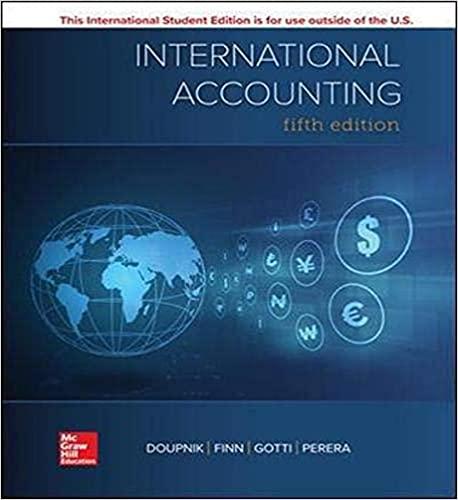Question
When a company declares (think of the journal entry) a dividend on common stock: Stockholders' equity decreases. Liabilities increase. Assets decrease. Stockholders equity decreases and
-
When a company declares (think of the journal entry) a dividend on common stock:
Stockholders' equity decreases.
Liabilities increase.
Assets decrease.
Stockholders equity decreases and liabilities increase.
3 points
QUESTION 4
-
When equipment becomes obsolete and there is a material, permanent decline in its fair value relative to book value, the equipment
has become impaired and the company should record a write-down to the new fair value.
should remain at its book value and managment should delay recording a write-down to fair value until the effect of the write-down will have a minimal effect on financial results.
should remain at its book value and management should not record a write down; when and if the asset is sold, the loss will be reflected
should continue to be depreciated in accordance with original plans without any write-down to fair value.
QUESTION 6
Very often, failure to record a liability means failure to record a(n)
expense.
gain.
revenue.
windfall.
Which of the following is true of goodwill?
when a business is purchased, goodwill is the excess of the cost over the fair value of the net assets (assets less liabilities) acquired
all corporations may amortize goodwill over a period not to exceed ten years.
goodwill may be sold individually like other assets in a business such as a patent or copyright.
goodwill is properly classified as a long-term investment on a classified balance sheet.
QUESTION 9
A corporation might choose to issue a stock dividend to shareholders rather than a cash dividend because a stock dividend:
is not taxable to the corporation.
when issued, is not taxable to the shareholders.
usually will result in a decrease of the stock price so the stock may become more widely held.
all of the above.
Entity I needs to raise $1 million to finance a plant expansion. An advantage of meeting this requirement by issuing shares of common stock (rather than issuing bonds payable) is that:
in arriving at net income, the company will be able to deduct dividends paid on common stock.
the company will be able to deduct for tax purposes any dividends on common stock
with common stock, the company may choose to pay low or no dividends.
existing shareholders will be required to purchase more common stock to retain their same percentage ownership of the company.
in arriving at net income, the company will be able to deduct dividends paid on common stock.
the company will be able to deduct for tax purposes any dividends on common stock
with common stock, the company may choose to pay low or no dividends.
existing shareholders will be required to purchase more common stock to retain their same percentage ownership of the company.
3 points
QUESTION 11
Dividends in arrears on cumulative preferred stock
never have to be paid, even if common dividends are paid.
should be disclosed in the notes to the financial statements.
enable the preferred stockholders to share equally in corporate earnings with the common stockholders.
should be recorded as a current liability until they are paid.
When there is a change in estimated depreciation due to a change in estimated useful life or salvage value:
previous depreciation should be corrected
only future years depreciation should be revised
current and future years depreciation should be revised
there is no need to revise current or future years depreciation because depreciation depends upon estimates
3 points
QUESTION 15
When bonds are issued at a premium, the total interest expense of the bonds over the life of the bonds is:
interest paid over the life of the bond.
interest paid over the life of the bonds plus the amount of the premium at the sale point.
interest paid over the life of the bonds minus the amount of the premium at the sale point.
premium at the sale point.
Bonds that the issuer can redeem at a stated amount prior to maturity are called:
secured bonds
debentures or unsecured bonds
callable bonds
convertible bonds
3 points
QUESTION 16
3 points
QUESTION 10
Step by Step Solution
There are 3 Steps involved in it
Step: 1

Get Instant Access to Expert-Tailored Solutions
See step-by-step solutions with expert insights and AI powered tools for academic success
Step: 2

Step: 3

Ace Your Homework with AI
Get the answers you need in no time with our AI-driven, step-by-step assistance
Get Started


